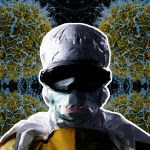But Dr. Lown identifies first and foremost as a healer. In 1996, he published
“The Lost Art of Healing,” an appeal to restore the “3,000-year tradition, which bonded doctor and patient in a special affinity of trust.” The biomedical sciences had begun to dominate our conception of health care, and he warned that “healing is replaced with treating, caring is supplanted by managing, and the art of listening is taken over by technological procedures.”
He called for a return to the fundamentals of doctoring — listening to know the patient behind the symptoms; carefully touching the patient during the physical exam to communicate caring; using words that affirm the patient’s vitality; and attending to the stresses and situations of his life circumstances.
This time he was the patient in need of healing. And I was the doctor, the product of a system that has, if anything, become even more impersonal and transactional since he first wrote those words.
Despite his reputation, Dr. Lown was treated like just another widget on the hospital’s conveyor belt. “Each day, one person on the medical team would say one thing in the morning, and by the afternoon the plan had changed,” he later told me. “I always was the last to know what exactly was going on, and my opinion hardly mattered.”
What he needed was “the feeling of being a major partner in this decision,” he said. “Even though I am a doctor, I am still a human with anxieties.”
The medical team was concerned that because Dr. Lown was having trouble swallowing, he was at risk for recurrent pneumonias. So we restricted his diet to purées. Soon the speech therapist recommended that we forbid him to ingest anything by mouth. Then the conversation spiraled into ideas for alternative feeding methods — a temporary tube through the nose followed, perhaps, by a feeding tube in the stomach.
“Doctors no longer minister to a distinctive person but concern themselves with fragmented, malfunctioning” body parts, Dr. Lown wrote in “The Lost Art of Healing.” Now, two decades later, he’d become a victim of exactly what he had warned against.
As the intern and the perpetrator of the orders, I felt impossibly torn and terribly guilty. So after Dr. Lown was discharged the next week, I kept in touch, hoping to continue this important conversation.
We have since spent time together at his home, where he is back to living peacefully and swallowing carefully (no alternative feeding methods necessary).
I had known Dr. Lown as a doctor and a patient; now I got to know him as an activist. We agreed that the health care system needed to change. To do that, Dr. Lown said, “doctors of conscience” have to “resist the industrialization of their profession.”
This begins with our own training. Certainly doctors must understand disease, but medical education is overly skewed toward the biomedical sciences and minutiae about esoteric and rare disease processes. Doctors also need time to engage with the humanities, because they are the gateway to the human experience.
To restore balance between the art and the science of medicine, we should curtail initial coursework in topics like genetics, developmental biology and biochemistry, making room for training in communication, interpersonal dynamics and leadership.
Such skills would not only help doctors care for our fellow human beings but would also strengthen our ability to advocate for health care as a human right and begin to rectify the broken economics and perverse incentives of the system.
Finally, hospitals should be a last resort, not the hallmark of the health care system. The bulk of health care resources should go instead into homes and communities. After all, a large majority of health problems are shaped by nonmedical factors like pollution and limited access to healthy food. Doctors must partner with public health and community development efforts to create a culture of health and well-being in patients’ daily lives.
As I navigate my professional journey, Dr. Lown’s example inspires me to go to work every day with the perspective of a patient, the spirit of an activist and the heart of a healer.





